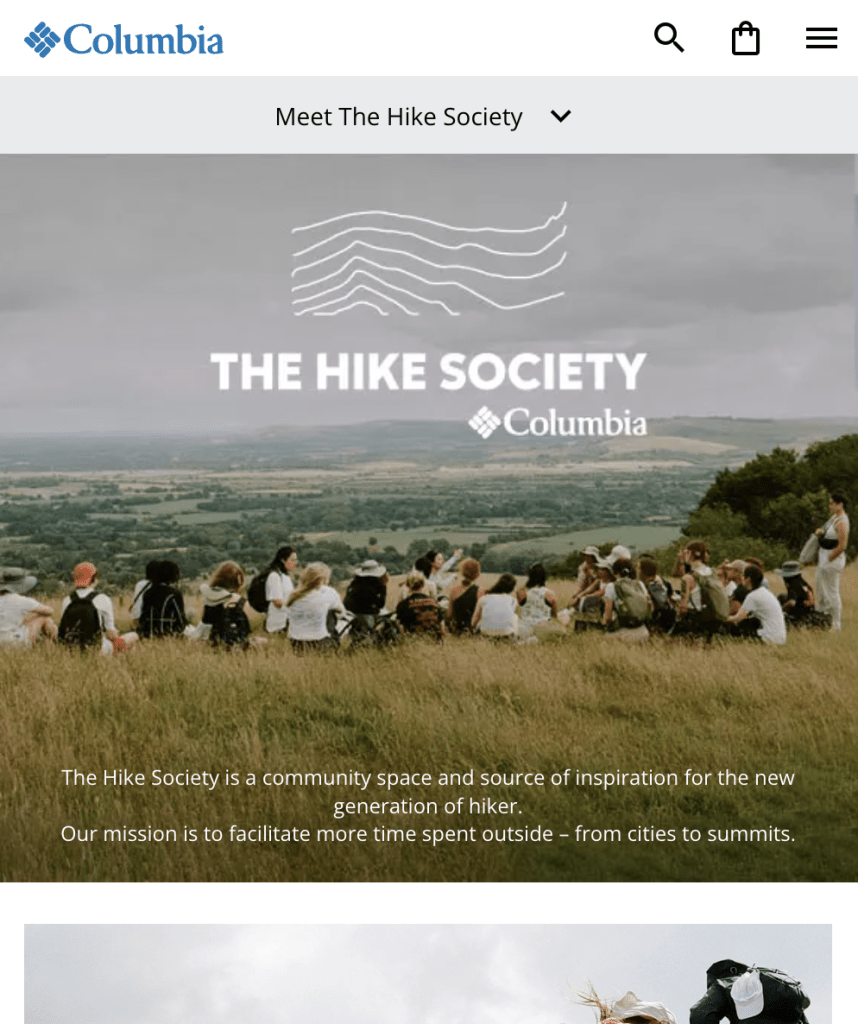What is content marketing?
Content marketing is the creation and distribution of content. It’s been used by brands for promotion for hundreds of years but emerged as a totally separate discipline in the marketing world around 8-9 years ago, despite existing long before it was given its new name.
If you’ve ever studied marketing, you’ll probably have come across the example of John Deer’s “The Furrow”. Potentially one of the oldest examples of content marketing (or just the most cited), the magazine was used to promote the company’s farm equipment in 1985 and was delivered every quarter by the US postal service to people’s homes.
Content is used for promotion, yes. But it also goes beyond this…
Tinder recently launched its first UK brand film as part of a global campaign entitled “It Starts with a Swipe”, distributing a variety of content – from UGC to shorter videos – across its channels.
This campaign was created in the hope of moving the brand away from associations with ‘hook up’ culture to a narrative that’s more focused on building meaningful connections. Tinder is using content to change consumer perceptions and, in a way, to reposition itself within the online dating market.
Other consumer brands smashing the content game at the minute are self-aware Oat drink brand Oatly, known for its witty copywriting, and online homestay marketplace Airbnb, which took UGC to a new level in 2021 with its ‘Made possible by hosts’ campaign. Both of which continue to make marketing headlines due to their bold approach to content.

About the author
Simarin Tandon | Performance and Digital Marketing Manager
Simarin is the Performance and Digital Marketing Manager at Brandnation.
A curious marketer, Simarin is always on the pulse when it comes to performance and digital updates across both paid and organic platforms.
Whether The Furrow, words on a drink carton or an Instagram reel, the goal is the same.
Content is how brands connect with consumers, communicate value props, points of difference, new products, new features, and everything in between.
Why is content marketing important?
When I think of content marketing, I think of Ann Handley – content expert, writer and bestselling author.
I first came across her during Covid when I heard about her book ‘Everybody Writes’ which consistently makes marketing must-read lists.
Ann recently posted the following on LinkedIn which sums up the importance of effective content creation even with tools like ChatGPT at your fingertips:
“Someone asked me: What’s the point of a writer in the age of AI content?
A better question might be: “What’s the point of content?
The point of content is to generate leads, right? No. The point of content is to create a connection.”

The idea of ‘creating a connection’ sounds fluffy – which is why marketing teams have historically found it hard to get buy in for top of funnel content creation as there is often not a clear link between a really good singular piece of content (such as a webinar) and new revenue.
When you boil it down though, content that changes perceptions (Tinder) or sparks a light-hearted conversation online (Oatly) today, can very much impact revenue tomorrow. It’s through these connections and engagements online that brands gain sought-after real estate in the mind of the consumer.
And really, if content didn’t sell, brands wouldn’t invest in it.
The importance of content diversification
It’s hard for brands to stand out, especially if there’s a variety of other options available to consumers, maybe even at a more competitive price. Brands today very rarely have a totally unique value prop and when they do, it’s not long before competition starts rearing its head. This competition makes it difficult for brands to get the airtime they need to really connect with consumers.
Content diversification is essential to stand out by showing up where people spend time and delivering content in a format that’s in line with their expectations. An example of this is the increasing popularity of short form content. From Instagram Stories and Instagram Reels to YouTube Shorts and TikTok videos, this is how consumers (especially gen z) want to have information delivered to them.
Content diversification (and content creation in general) requires resource, which is why it often gets missed by brands, who then fall into a relentless cycle of blog posts and articles and lose sight of the goal which is to create something unique and exciting.
The impact of great storytelling
An example of effective storytelling is Netflix’s Drive to Survive – an original documentary series that follows drivers, team owners and other key figures of the Formula 1 World Championship.
This series shows how branded content coupled with authentic storytelling can benefit a brand. The ability to take viewers beyond the competition – delving into the personal stories of key figures – humanises F1 and helps engage those less familiar with the competition without losing the interest of fans.
The distribution of this content is noteworthy, too – collaborating with Netflix opened F1 up to a much wider and more diverse audience. According to Toast Studio, this branded docuseries helped increase F1 ticket sales in the US and caused a shift in viewer demographics towards a much younger audience than seen before the series launched.
Considering culture in content marketing
Culture contains many things, it’s “all the ways of life, including arts, beliefs, and institutions”.
Brands can find inspiration and context for their campaigns in culture, and the ability to understand and integrate cultural elements into their content strategy can mean greater reach and stronger cut-through by engaging people in a way that truly resonates. But what does this look like in practice?
We’ve been working with Columbia to create a movement that captures the modern interpretation of hiking by mobilising the young, diverse and stylish new cohort of hikers into the outdoors.
We developed a creative campaign and brand community on the Columbia website entitled ‘The Hike Society’ a community space and source of inspiration for the next generation of hiker.
To launch the community, we spearheaded The Annual General Hike, a mass participation event collaborating with outdoor communities across the country responsible for driving outdoor culture.
Hiking groups were profiled to showcase the power of community, mental health and the rise of the gorpcore style trend.
The campaign, rooted in outdoor and hiking culture, took a truly innovative earned-first creative approach with the campaign gaining significant coverage online.
You can browse more of our work here.
How to measure the effectiveness of content marketing
Content is the driving force behind your outbound marketing strategy. How do you measure its effectiveness, though?
The answer is different depending on what the business objective is.
If the content is focusing on product or offer promotion, brands will report on bottom funnel metrics such purchases and revenue.

If it’s sharing valuable, ungated content such as a blog or guide, brands should report on top of funnel engagement metrics such as an uplift in web traffic, time spent on key pages on the site, and so on.
If the objective of the content is to increase brand awareness, then KPIs will include metrics such as the number of brand mentions online and the volume of branded organic search queries.
Going back to the Tinder example – its campaign is focused on shifting consumer and user perceptions, so whilst it will monitor brand sentiment and conversations online, it will also measure bottom-funnel metrics such as data on the number of new app users and time spent on the app. Why? Because it’s ability to effectively alter perceptions should, when the day is done, increase app usage.
Outlining what success looks like should be one of the first things a marketing team does when planning its content strategy.
There’s a lot to think about. We know a thing or two about content however, so if your team needs support we’d love to talk.





